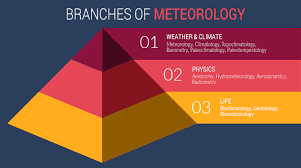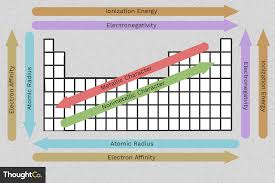
Meteorology and Weather Patterns – HNK Globals
Description:
Meteorology is the scientific study of the atmosphere, focusing on the processes that lead to weather patterns and climate variability. Understanding meteorology is crucial for predicting weather conditions, managing natural disasters, and providing essential information for agriculture, aviation, and everyday life. Weather patterns, influenced by global atmospheric conditions, include phenomena such as rainfall, thunderstorms, temperature fluctuations, wind patterns, and pressure systems. By studying meteorological data, scientists can make forecasts and issue warnings to minimize the impact of extreme weather events on society. Meteorology combines observational techniques, mathematical models, and computational tools to analyze and predict weather behaviors.
Key Concepts in Meteorology and Weather Patterns:
Atmospheric Composition
- The atmosphere is composed of gases such as nitrogen, oxygen, carbon dioxide, and water vapor, which play vital roles in determining the weather. Water vapor is particularly important as it contributes to cloud formation, precipitation, and the greenhouse effect.
Air Pressure and Wind Patterns
- Air pressure is the force exerted by the weight of air molecules. It is a fundamental factor in weather, with high-pressure systems generally bringing clear skies and low-pressure systems associated with clouds and storms. Wind patterns are driven by differences in air pressure, and the rotation of the Earth influences wind direction through the Coriolis effect.
Temperature and Heat Transfer
- Temperature is a critical element in weather patterns, influencing the movement of air masses and the formation of clouds. Heat transfer occurs through radiation, conduction, and convection, affecting how warm and cool air interact, leading to changes in weather.
Cloud Formation and Types
- Clouds form when moist air rises and cools, causing water vapor to condense into tiny water droplets or ice crystals. Different types of clouds, such as cumulus, stratus, and cirrus, signal varying weather conditions, from fair weather to rainstorms.
Precipitation and Storms
- Precipitation occurs when water vapor condenses and falls to the ground as rain, snow, sleet, or hail. Meteorologists study factors such as temperature, humidity, and air movement to predict precipitation and understand storm patterns, including thunderstorms, hurricanes, and tornadoes.
Weather Fronts and Air Masses
- A weather front is the boundary between two different air masses, typically characterized by differences in temperature, humidity, and pressure. Fronts are associated with significant weather changes, including precipitation and changes in wind direction. The four main types of fronts are cold, warm, stationary, and occluded.
Cyclones and Anticyclones
- Cyclones are low-pressure systems that can lead to storms, including hurricanes and tornadoes. In contrast, anticyclones are high-pressure systems associated with calm, dry weather. Both types of systems play crucial roles in shaping weather patterns.
Jet Streams
- Jet streams are fast-moving air currents located high in the atmosphere. They influence weather by steering weather systems, such as low and high-pressure areas, and can contribute to severe weather patterns, including winter storms and tornadoes.
Applications of Meteorology:
Weather Forecasting
- Meteorologists use data from weather stations, satellites, radar, and computer models to predict short-term and long-term weather patterns. Accurate weather forecasting is essential for daily life, agriculture, transportation, and disaster management.
Climate Change Monitoring
- Meteorology plays a key role in monitoring long-term climate changes by tracking shifts in temperature, precipitation patterns, and extreme weather events. This data is vital for understanding and addressing global climate change.
Disaster Preparedness and Response
- Meteorological data is crucial for preparing for and responding to natural disasters, including hurricanes, floods, and tornadoes. Early warnings based on weather predictions help mitigate the impacts of these disasters on communities.
Agricultural Planning
- Farmers rely on weather predictions to plan crop planting and harvesting schedules. Meteorology helps determine the best times to plant, irrigate, and protect crops from adverse weather conditions, such as droughts or frosts.
Aviation Safety
- Meteorology is essential for aviation, as pilots and air traffic controllers rely on weather data to ensure safe flight operations. Weather conditions such as wind speed, visibility, and storm activity are all monitored to prevent accidents and delays.
Marine Navigation
- Meteorological conditions, including wind and wave patterns, play a significant role in maritime navigation. Accurate weather predictions are essential for the safe travel of ships and boats, particularly in areas prone to storms or other extreme weather.
Why Choose HNK Globals for Meteorology Education?
Expert-Led Courses
- Learn from experienced meteorologists who have extensive knowledge of weather patterns, atmospheric processes, and forecasting techniques. Our expert instructors bring practical insights to the classroom, combining theory with real-world application.
Comprehensive Curriculum
- HNK Globals offers a well-rounded meteorology program that covers everything from the basics of atmospheric science to advanced weather forecasting techniques. Our courses are designed to provide a strong foundation for understanding and analyzing weather systems.
Cutting-Edge Tools and Resources
- Gain hands-on experience with the latest meteorological tools, including weather simulation software, satellite data analysis, and radar interpretation. This exposure ensures that learners are well-equipped to engage with real-world meteorological data.
Interactive Learning Opportunities
- Our interactive learning approach includes virtual labs, weather observation exercises, and case studies that allow you to apply meteorological principles to real-world scenarios. These experiences enhance your understanding of weather patterns and forecasting.
Global Community of Learners
- At HNK Globals, you’ll connect with a global community of students, professionals, and researchers who share your passion for meteorology. This network provides opportunities for collaboration and knowledge exchange, enhancing your learning experience.
Join HNK Globals today and embark on a journey to explore the fascinating world of meteorology and weather patterns, helping to predict and understand the forces that shape our planet’s climate!








